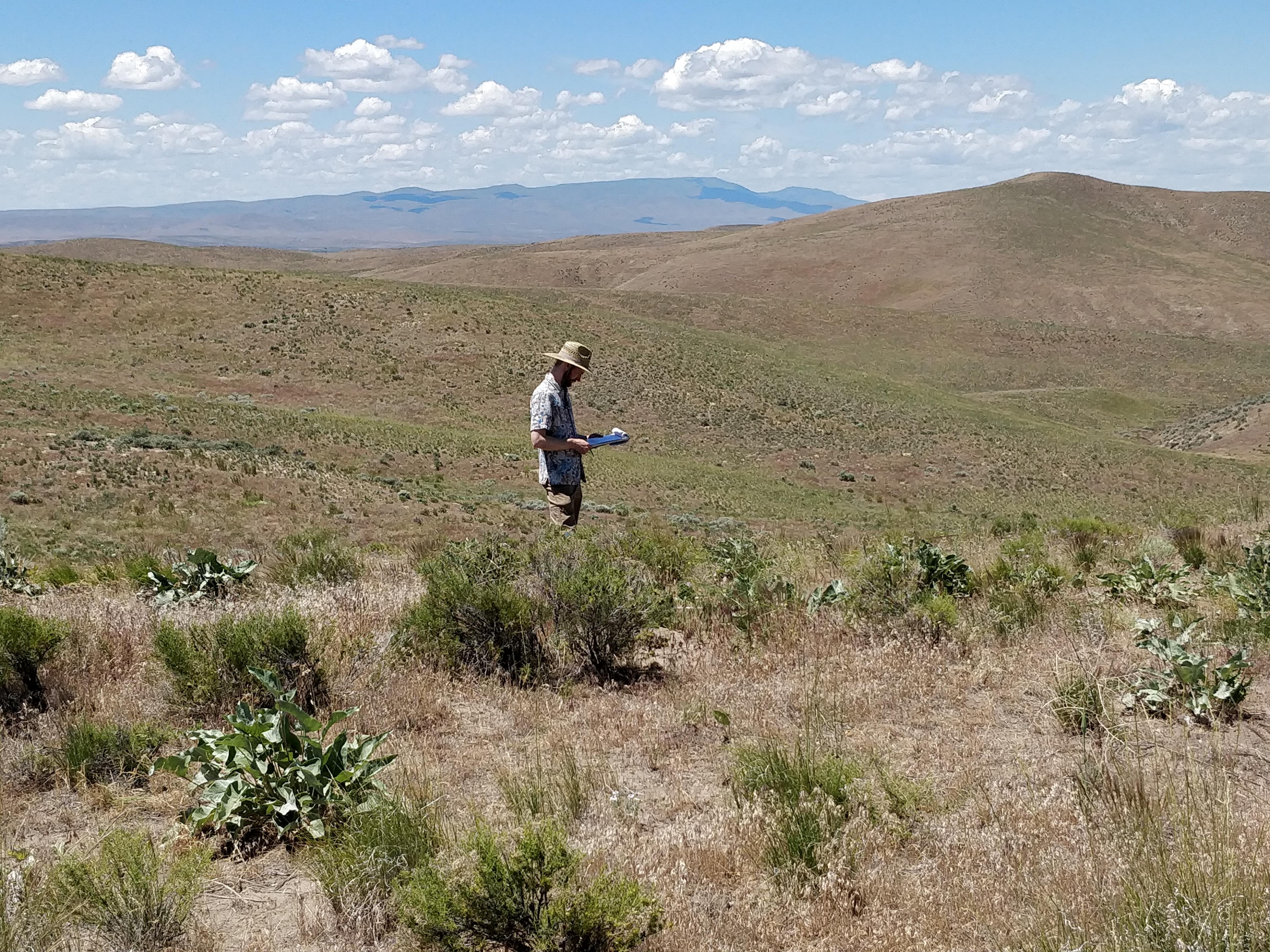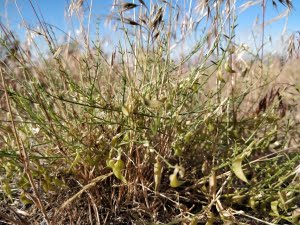
Beyond The Vale: The Ongoing Chronicles of Mulford’s Milkvetch
By IAE Conservation Research seasonal intern Justin Ford and Intern Crew Lead Nadav Mouallem
August 2020
With all three of us in separate trucks because of COVID-19 protocols, we packed and left Corvallis at 7 am for four nights of camping with stars in our eyes. The stay-at-home order for the state had started to roll back, and non-essential businesses were opening again. Our job for the week was to cross the Cascade Mountains and Oregon’s high desert to the town of Vale, Oregon. From there, we’d spend three days monitoring Mulford’s milkvetch (Astragalus mulfordiae, abbreviated as ASMU) in the surrounding areas. ASMU is a perennial plant on Oregon's endangered species list, and its small white flowers begin to show around April each year. Our COVID protocols were strict and followed CDC guidelines, including maintaining 6 feet of distance at all times, wearing masks, and traveling in separate vehicles.
In the early mornings after our arrival, we’d leave camp in a convoy all over the area. The land stretched unchanging in every direction, as did the treacherous roads we had to cross, making it difficult to gauge how far we were traveling each day.
Each day, we had a lot of ground to cover. The field crew was a third of the size it was planned to be due to COVID-19, and there wasn’t a lot of time to relax, discuss the biological history of our destinations, or even relax and chat about philosophy or our personal lives. Many of the sites had been heavily disturbed by cattle and people on all-terrain vehicles, highlighting the importance of engaging stakeholders to reduce disturbance to these habitats. Working around these obstacles, we’d record the size, location, and number of fruits from each milkvetch plant in a quadrat. Combined with the data taken by interns over the past 10 years, we’ll be able to see how Mulford’s milkvetch responds to the climate variables, and be able to make recommendations to the BLM to help it persist under the mounting pressures of climate change.
While the locations we visited shared similarities, the landscapes they provided were very distinct, and it’s difficult to convey how significant it felt to look out at them. It was like stepping out of a spaceship, especially after all the time spent confined in our homes. And it was easy to lose ourselves in the massive hills, scattered sagebrush, and open desert crossing beyond the horizon.
Eventually we finished our field work, and returned home to Corvallis. After reflecting on our time there, I find myself imagining what those places look like now; unchanged by our presence. Colder in the night now, with a cool breeze passing through, and likely, also a cow.
We are grateful to our funders, Vale district BLM and the Interagency Special Status/Sensitive Species Program, for helping us make this research happen.
Restoration
Research
Education
Contact
Main Office:
4950 SW Hout Street
Corvallis, OR 97333-9598
541-753-3099
info@appliedeco.org
Southwest Office:
1202 Parkway Dr. Suite B
Santa Fe, NM 87507
(505) 490-4910
swprogram@appliedeco.org
© 2025 Institute for Applied Ecology | Privacy Policy


